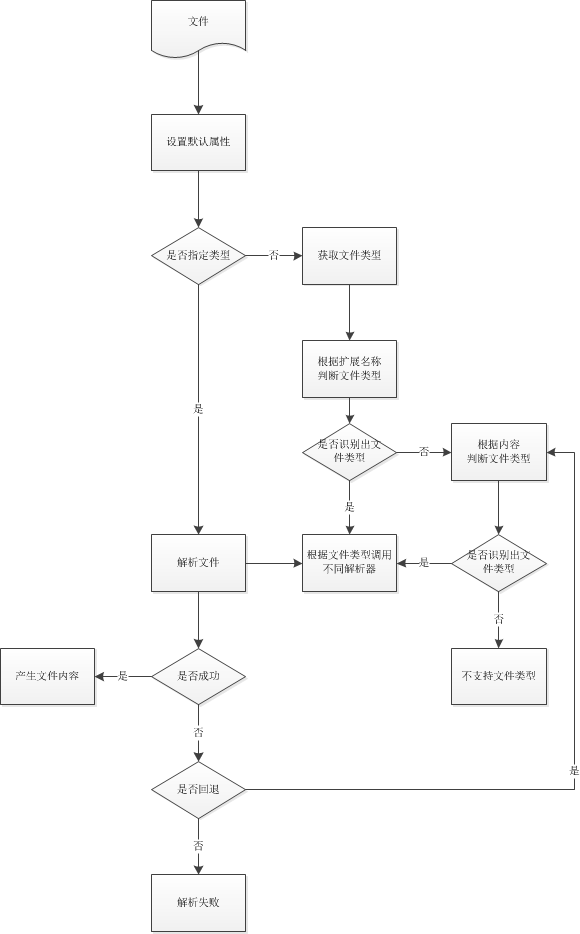点击上方“小白学视觉”,选择加"星标"或“置顶”
重磅干货,第一时间送达导读
本文主要讲解如何将pytorch的模型部署到c++平台上的模型流程,按顺序分为四大块详细说明了模型转换、保存序列化模型、C ++中加载序列化的PyTorch模型以及执行Script Module。>>加入极市CV技术交流群,走在计算机视觉的最前沿
最近因为工作需要,要把pytorch的模型部署到c++平台上,基本过程主要参照官网的教学示例,期间发现了不少坑,特此记录。
1.模型转换
libtorch不依赖于python,python训练的模型,需要转换为script model才能由libtorch加载,并进行推理。在这一步官网提供了两种方法:
方法一:Tracing
这种方法操作比较简单,只需要给模型一组输入,走一遍推理网络,然后由torch.ji.trace记录一下路径上的信息并保存即可。示例如下:
import torch
import torchvision# An instance of your model.
model = torchvision.models.resnet18()# An example input you would normally provide to your model's forward() method.
example = torch.rand(1, 3, 224, 224)# Use torch.jit.trace to generate a torch.jit.ScriptModule via tracing.
traced_script_module = torch.jit.trace(model, example)缺点是如果模型中存在控制流比如if-else语句,一组输入只能遍历一个分支,这种情况下就没办法完整的把模型信息记录下来。
方法二:Scripting
直接在Torch脚本中编写模型并相应地注释模型,通过torch.jit.script编译模块,将其转换为ScriptModule。示例如下:
class MyModule(torch.nn.Module):def __init__(self, N, M):super(MyModule, self).__init__()self.weight = torch.nn.Parameter(torch.rand(N, M))def forward(self, input):if input.sum() > 0:output = self.weight.mv(input)else:output = self.weight + inputreturn outputmy_module = MyModule(10,20)
sm = torch.jit.script(my_module)forward方法会被默认编译,forward中被调用的方法也会按照被调用的顺序被编译
如果想要编译一个forward以外且未被forward调用的方法,可以添加 @torch.jit.export.
如果想要方法不被编译,可使用
@torch.jit.ignore(https://pytorch.org/docs/master/generated/torch.jit.ignore.html#torch.jit.ignore)
或者 @torch.jit.unused(https://pytorch.org/docs/master/generated/torch.jit.unused.html#torch.jit.unused)
# Same behavior as pre-PyTorch 1.2
@torch.jit.script
def some_fn():return 2# Marks a function as ignored, if nothing
# ever calls it then this has no effect
@torch.jit.ignore
def some_fn2():return 2# As with ignore, if nothing calls it then it has no effect.
# If it is called in script it is replaced with an exception.
@torch.jit.unused
def some_fn3():import pdb; pdb.set_trace()return 4# Doesn't do anything, this function is already
# the main entry point
@torch.jit.export
def some_fn4():return 2在这一步遇到好多坑,主要原因可归为一下两点
1. 不支持的操作
TorchScript支持的操作是python的子集,大部分torch中用到的操作都可以找到对应实现,但也存在一些尴尬的不支持操作,详细列表可见https://pytorch.org/docs/master/jit_unsupported.html#jit-unsupported,下面列一些我自己遇到的操作:
1)参数/返回值不支持可变个数,例如
def __init__(self, **kwargs):或者
if output_flag == 0:return reshape_logits
else:loss = self.loss(reshape_logits, term_mask, labels_id)return reshape_logits, loss2)各种iteration操作
eg1.
layers = [int(a) for a in layers]报错torch.jit.frontend.UnsupportedNodeError: ListComp aren’t supported
可以改成:
for k in range(len(layers)):layers[k] = int(layers[k])eg2.
seq_iter = enumerate(scores)
try:_, inivalues = seq_iter.__next__()
except:_, inivalues = seq_iter.next()eg3.
line = next(infile)3)不支持的语句
eg1. 不支持continue
torch.jit.frontend.UnsupportedNodeError: continue statements aren’t supported
eg2. 不支持try-catch
torch.jit.frontend.UnsupportedNodeError: try blocks aren’t supported
eg3. 不支持with语句
4)其他常见op/module
eg1. torch.autograd.Variable
解决:使用torch.ones/torch.randn等初始化+.float()/.long()等指定数据类型。
eg2. torch.Tensor/torch.LongTensor etc.
解决:同上
eg3. requires_grad参数只在torch.tensor中支持,torch.ones/torch.zeros等不可用
eg4. tensor.numpy()
eg5. tensor.bool()
解决:tensor.bool()用tensor>0代替
eg6. self.seg_emb(seg_fea_ids).to(embeds.device)
解决:需要转gpu的地方显示调用.cuda()
总之一句话:除了原生python和pytorch以外的库,比如numpy什么的能不用就不用,尽量用pytorch的各种API。
2. 指定数据类型
1)属性,大部分的成员数据类型可以根据值来推断,空的列表/字典则需要预先指定
from typing import Dictclass MyModule(torch.nn.Module):my_dict: Dict[str, int]def __init__(self):super(MyModule, self).__init__()# This type cannot be inferred and must be specifiedself.my_dict = {}# The attribute type here is inferred to be `int`self.my_int = 20def forward(self):passm = torch.jit.script(MyModule())2)常量,使用Final关键字
try:from typing_extensions import Final
except:# If you don't have `typing_extensions` installed, you can use a# polyfill from `torch.jit`.from torch.jit import Finalclass MyModule(torch.nn.Module):my_constant: Final[int]def __init__(self):super(MyModule, self).__init__()self.my_constant = 2def forward(self):passm = torch.jit.script(MyModule())3)变量。默认是tensor类型且不可变,所以非tensor类型必须要指明
def forward(self, batch_size:int, seq_len:int, use_cuda:bool):方法三:Tracing and Scriptin混合
一种是在trace模型中调用script,适合模型中只有一小部分需要用到控制流的情况,使用实例如下:
import torch@torch.jit.script
def foo(x, y):if x.max() > y.max():r = xelse:r = yreturn rdef bar(x, y, z):return foo(x, y) + ztraced_bar = torch.jit.trace(bar, (torch.rand(3), torch.rand(3), torch.rand(3)))另一种情况是在script module中用tracing生成子模块,对于一些存在script module不支持的python feature的layer,就可以把相关layer封装起来,用trace记录相关layer流,其他layer不用修改。使用示例如下:
import torch
import torchvisionclass MyScriptModule(torch.nn.Module):def __init__(self):super(MyScriptModule, self).__init__()self.means = torch.nn.Parameter(torch.tensor([103.939, 116.779, 123.68]).resize_(1, 3, 1, 1))self.resnet = torch.jit.trace(torchvision.models.resnet18(),torch.rand(1, 3, 224, 224))def forward(self, input):return self.resnet(input - self.means)my_script_module = torch.jit.script(MyScriptModule())2.保存序列化模型
如果上一步的坑都踩完,那么模型保存就非常简单了,只需要调用save并传递一个文件名即可,需要注意的是如果想要在gpu上训练模型,在cpu上做inference,一定要在模型save之前转化,再就是记得调用model.eval(),形如
gpu_model.eval()
cpu_model = gpu_model.cpu()
sample_input_cpu = sample_input_gpu.cpu()
traced_cpu = torch.jit.trace(traced_cpu, sample_input_cpu)
torch.jit.save(traced_cpu, "cpu.pth")traced_gpu = torch.jit.trace(traced_gpu, sample_input_gpu)
torch.jit.save(traced_gpu, "gpu.pth")3.C++load训练好的模型
要在C ++中加载序列化的PyTorch模型,必须依赖于PyTorch C ++ API(也称为LibTorch)。libtorch的安装非常简单,只需要在pytorch官网(https://pytorch.org/)下载对应版本,解压即可。会得到一个结构如下的文件夹。
libtorch/bin/include/lib/share/然后就可以构建应用程序了,一个简单的示例目录结构如下:
example-app/CMakeLists.txtexample-app.cppexample-app.cpp和CMakeLists.txt的示例代码分别如下:
#include <torch/script.h> // One-stop header.
#include <iostream>#include <memory>
int main(int argc, const char* argv[]) {if (argc != 2) {std::cerr << "usage: example-app <path-to-exported-script-module>\n";return -1;}torch::jit::script::Module module;try {// Deserialize the ScriptModule from a file using torch::jit::load().module = torch::jit::load(argv[1]);}catch (const c10::Error& e) {std::cerr << "error loading the model\n";return -1;}std::cout << "ok\n";
}cmake_minimum_required(VERSION 3.0 FATAL_ERROR)
project(custom_ops)find_package(Torch REQUIRED)add_executable(example-app example-app.cpp)
target_link_libraries(example-app "${TORCH_LIBRARIES}")
set_property(TARGET example-app PROPERTY CXX_STANDARD 14)至此,就可以运行以下命令从example-app/文件夹中构建应用程序啦:
mkdir build
cd build
cmake -DCMAKE_PREFIX_PATH=/path/to/libtorch ..
cmake --build . --config Release其中/path/to/libtorch是之前下载后的libtorch文件夹所在的路径。这一步如果顺利能够看到编译完成100%的提示,下一步运行编译生成的可执行文件,会看到“ok”的输出,可喜可贺!
4.执行Script Module
终于到最后一步啦!下面只需要按照构建输入传给模型,执行forward就可以得到输出啦。一个简单的示例如下:
// Create a vector of inputs.
std::vector<torch::jit::IValue> inputs;
inputs.push_back(torch::ones({1, 3, 224, 224}));// Execute the model and turn its output into a tensor.
at::Tensor output = module.forward(inputs).toTensor();
std::cout << output.slice(/*dim=*/1, /*start=*/0, /*end=*/5) << '\n';前两行创建一个torch::jit::IValue的向量,并添加单个输入. 使用torch::ones()创建输入张量,等效于C ++ API中的torch.ones。然后,运行script::Module的forward方法,通过调用toTensor()将返回的IValue值转换为张量。C++对torch的各种操作还是比较友好的,通过torch::或者后加_的方法都可以找到对应实现,例如
torch::tensor(input_list[j]).to(at::kLong).resize_({batch, 128}).clone()
//torch::tensor对应pytorch的torch.tensor; at::kLong对应torch.int64;resize_对应resize最后check一下确保c++端的输出和pytorch是一致的就大功告成啦~
踩了无数坑,薅掉了无数头发,很多东西也是自己一点点摸索的,如果有错误欢迎指正!
参考资料
PyTorch C++ API - PyTorch master document
Torch Script - PyTorch master documentation
下载1:OpenCV-Contrib扩展模块中文版教程
在「小白学视觉」公众号后台回复:扩展模块中文教程,即可下载全网第一份OpenCV扩展模块教程中文版,涵盖扩展模块安装、SFM算法、立体视觉、目标跟踪、生物视觉、超分辨率处理等二十多章内容。
下载2:Python视觉实战项目52讲
在「小白学视觉」公众号后台回复:Python视觉实战项目,即可下载包括图像分割、口罩检测、车道线检测、车辆计数、添加眼线、车牌识别、字符识别、情绪检测、文本内容提取、面部识别等31个视觉实战项目,助力快速学校计算机视觉。
下载3:OpenCV实战项目20讲
在「小白学视觉」公众号后台回复:OpenCV实战项目20讲,即可下载含有20个基于OpenCV实现20个实战项目,实现OpenCV学习进阶。
交流群
欢迎加入公众号读者群一起和同行交流,目前有SLAM、三维视觉、传感器、自动驾驶、计算摄影、检测、分割、识别、医学影像、GAN、算法竞赛等微信群(以后会逐渐细分),请扫描下面微信号加群,备注:”昵称+学校/公司+研究方向“,例如:”张三 + 上海交大 + 视觉SLAM“。请按照格式备注,否则不予通过。添加成功后会根据研究方向邀请进入相关微信群。请勿在群内发送广告,否则会请出群,谢谢理解~






